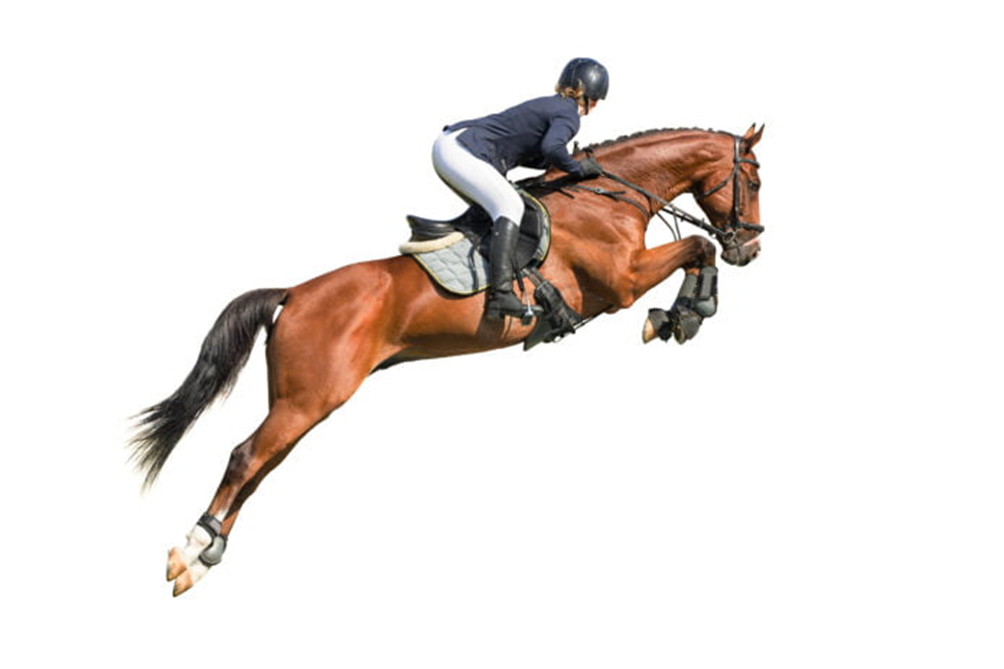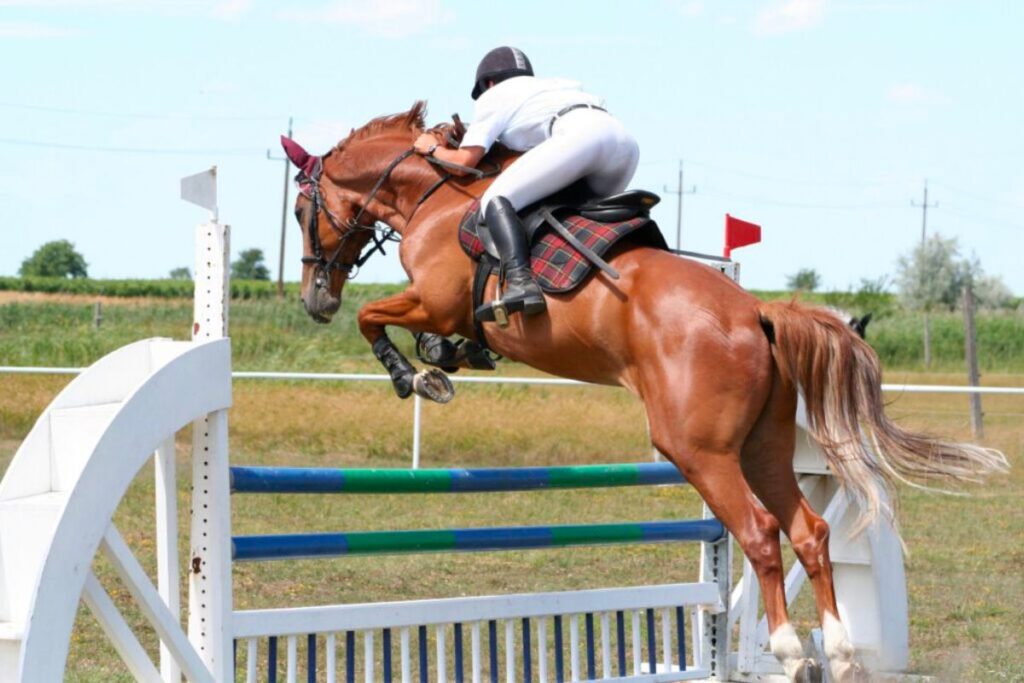Menu

We can admire the beautiful horses, amazing obstacles, and the impressive technique of top riders. And if you yourself love to take a tour on the jumping course, who is better to learn from than the masters of show jumping? For example, by focusing on how successful riders and their horses manage to jump tall obstacles without any of them losing their balance. Or you can pay attention to how the horse and rider find a common balance point and thereby get a good position and get safely and flawlessly over on the other side of the obstacles. Here are four tips to help you secure a good jumping position with your own horse.
Riding without stirrups can help you develop a more independent seat. That way you will avoid using the stirrups to keep the balance over the obstacles and maybe 'jump too much'. By becoming independent of your stirrups, you will better be able to follow the horse's balance point, so you jump with it rather than before or after it.
If your legs tend to slide backwards and up near the horse's belly, it's most likely because you are moving your upper body further than the horse's balance point when you are heading over an obstacle. Therefore, it is important not to overdo this position in the saddle.
You may also like to read: Showjumper: The best way to jump water is by removing all pressure
If you want to improve your position over the jump, then it is generally better to train with many low obstacles rather than just using one high. This is because you force yourself to position yourself many times during the training.
You can start practicing it over some polls. Then you can use a pair of cavalettis and finally do a series of gymnastic jumps at different heights so that you learn to assess how and how much you need to lift yourself over different heights.
Once you have mastered it, you can slowly start increase the height on the jumps. This way, you slowly and surely work your way towards gaining the necessary balance and strength. Because you are more in balance, the horse will find it much easier to clear the high jumps - unlike if you had started with a poor balance and high jumps from the beginning.

The difficulty with practicing this position over a jump is that the movement only lasts for a few seconds. To build muscle without having to jump lots of times every single day, you can train the position in a raised seat. You can do this in both trot and canter. However, it is hardest in trot because your knees and ankles have to absorb the horse’s harder and more frequent movements. Therefore, it is easier to start with practicing it in canter. The advantage of practicing it in trot, however, is that it strengthens your balance even more. Of course, you can also do it in walk – which is really a lot harder than you might immediately think!
Learning to follow the horse correctly over a jump is probably one of the most difficult things about the art of jumping - and yes, it really is an art! You must first and foremost know your horse, but you must also know when enough is enough. And when too little is too little, so that you neither exaggerate nor overdo it. Both can cause the horse to knock down the rails because it loses its balance. If you raise yourself too much, it will also be harder for you to quickly get back in the saddle again when you land. If, on the other hand, you lift yourself too little or too late so that the horse jumps in front of you, then it does not just end up looking awkward. You will also not be able to support the horse adequately and therefore you will not be able to motivate it to do its best.
Although the height of the jump means something for how you should follow the horse, it is first and foremost the individual horse's movements that you as a rider must get to know. Some horses jump big even over a small obstacle. Therefore, you do cannot necessarily use the same position in the saddle jump a particular obstacle on two different horses. It is best to try to follow the horse's movements as well as possible all the way around the course. It's easier said than done and requires lots of practice - and then a little more practice.